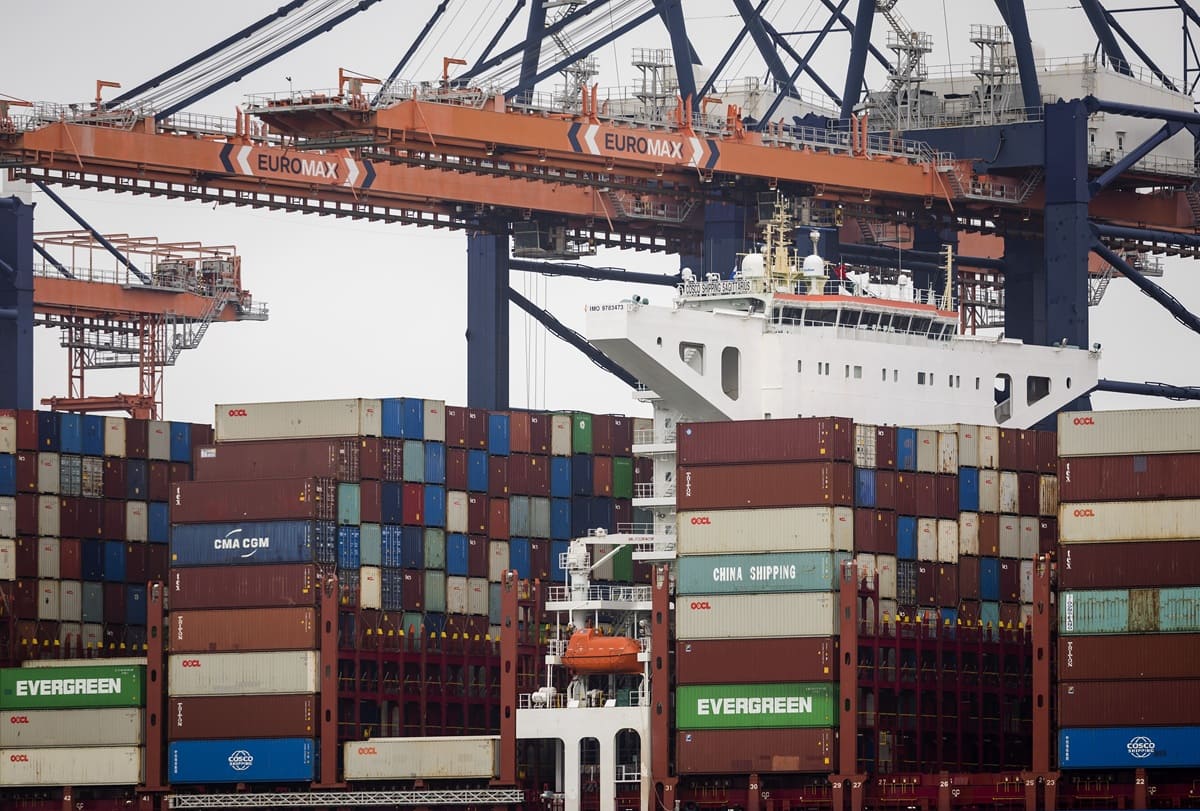ROME (ITALPRESS) – In February 2025, Istat estimates for trade interchange with non-EU27 countries a cyclical increase for both flows, larger for exports (+2.8%) than for imports (+0.8%). The month-on-month increase in exports is due to higher sales of consumer goods, durables (+8.4 percent) and non-durables (+8.0 percent), and capital goods (+2.2 percent); on the other hand, exports of energy (-19.9 percent) and intermediate goods (-1.5 percent) decrease.
On the import side, the cyclical increase is mainly explained by higher purchases of energy (+18.0%); imports of non-durable consumer goods are also growing (+2.6%), while imports of capital goods (-10.4%), intermediate goods (-5.8%) and consumer durables (-5.1%) are decreasing. In the December 2024-February 2025 quarter, compared with the previous quarter, exports grew by 3.9 percent; growth affected all groupings except consumer durables (-8.7 percent). In the same period, imports show an increase of 6.7 percent, mainly driven by higher purchases of energy (+14.2 percent).
In February 2025, exports decreased year-on-year by 2.1 percent (it was +3.3 percent in January). The trend decline in domestic exports to non-EU markets is mainly due to the marked decline in sales of energy (-23.3%) and capital goods (-15.3%); in contrast, exports of non-durable consumer goods (+13.7%) are up sharply.
Imports show a trend growth of 8.6 percent, almost entirely explained by higher purchases of consumer goods, durables (+17.1 percent) and non-durables (+17.9 percent), and energy (+17.6 percent). In February 2025, the trade surplus with non-EU27 countries was +4,707 million (+6,885 million in the same month of 2024). The energy deficit (-4,800 million) is higher than a year earlier (-3,779 million). The surplus in non-energy interchange falls from 10,664 million in February 2024 to 9,508 million in February 2025. In February 2025, there are large year-on-year reductions in exports to Turkey (-10.6 percent) and the United States (-9.7 percent). Sales to Switzerland (+17.3 percent), OPEC countries (+12.9 percent), the United Kingdom (+8.5 percent) and ASEAN countries (+7.4 percent) grow.
Imports from OPEC countries (+34.3%) and China (+18.3%) show strong trend growth; purchases from ASEAN countries and the United Kingdom also increase (for both +11.7%). In contrast, imports from the United States (-4.9%), Turkey (-4.6%) and Switzerland (-2.0%) decrease.
“In February, the cyclical increase in exports to non-EU27 countries was mainly due to higher sales of non-durable consumer goods. On a year-on-year basis, exports are again flexing (-2.1 percent), but the dynamic is influenced by high-impact movements (shipbuilding) to the United States, recorded in February 2024,” Istat comments; net of these, a trend growth in exports of +1.7 percent is estimated. The increase, both conjunctural and trend, in imports is mainly due to higher purchases of energy and non-durable consumer goods. In the first two months of 2025, the trend growth in exports to non-EU countries is moderately positive (+0.4%; +1.0% excluding energy). In the same period, the trade surplus with non-EU countries is +5.1 billion (it was +9.9 billion in the first two months of 2024).”
– IPA Agency photo –
(ITALPRESS).

